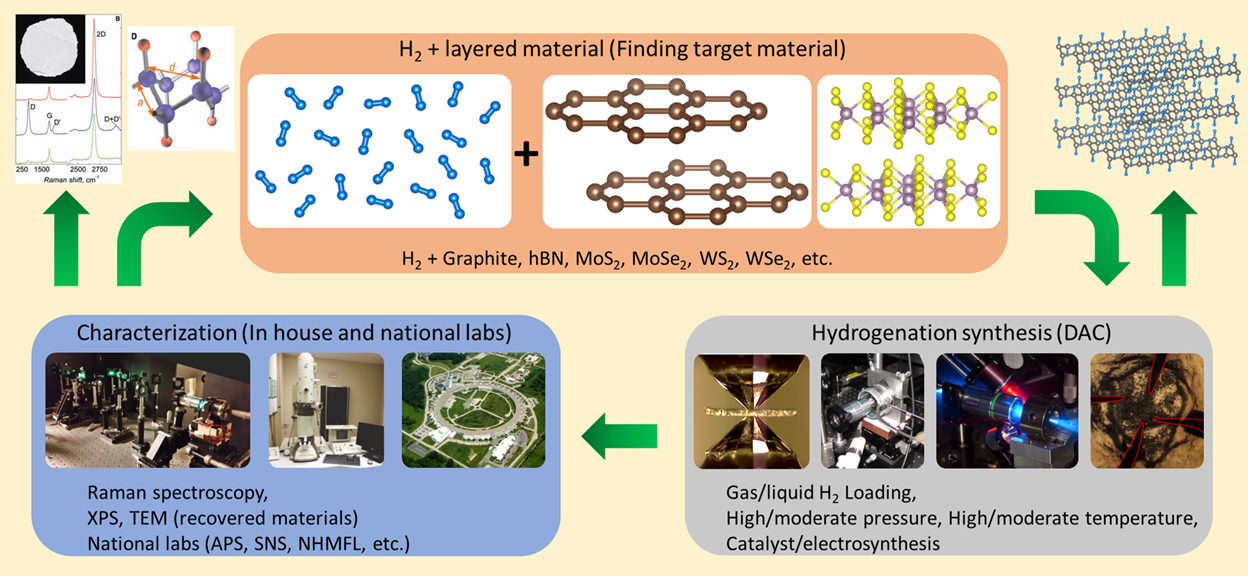Pressure-Driven Hydrogen Storage Research Group

Hydrogen fuel cells generate electricity using hydrogen gas (H₂), with water (H₂O) as the only byproduct, making them a promising clean energy solution. While hydrogen-powered vehicles are already in use, efficient, compact, and cost-effective hydrogen storage remains a challenge. Conventional storage methods, such as compressed gas cylinders and liquid hydrogen tanks, are large and unsuitable for mobile applications. An alternative is storing hydrogen within solid, layered materials, which have unique crystal structures consisting of atomic-thick layers held together by weak forces. Notable examples of layered materials include graphite (C), hexagonal boron nitride (hBN), molybdenum disulfide (MoS₂), tungsten disulfide (WS₂), and others. By applying pressure (around 5.5 GPa ≈ 55,000 atmospheres), hydrogen can be inserted between these layers, potentially improving storage capabilities. This research aims to explore how pressure can enhance the hydrogen storage potential of layered materials. If anyone is interested, please contact Dr. Lim at jlim5@eiu.edu and find more information at Dr. Lim's website.
References: D. C. Elias, et al., Science 323, 610 (2009), Diamond anvil cell (Image courtesy of Steve Jacobsen), Laser heating system (Image courtesy of Ashkan Salamat).